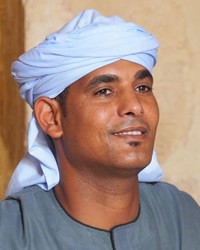Arab, Arabic Gulf Spoken in Iran

Photo Source:
Hella Nijssen - Pixabay
|
Send Joshua Project a map of this people group.
|
| People Name: | Arab, Arabic Gulf Spoken |
| Country: | Iran |
| 10/40 Window: | Yes |
| Population: | 305,000 |
| World Population: | 7,562,600 |
| Primary Language: | Arabic, Gulf |
| Primary Religion: | Islam |
| Christian Adherents: | 1.20 % |
| Evangelicals: | 0.10 % |
| Scripture: | Portions |
| Ministry Resources: | Yes |
| Jesus Film: | Yes |
| Audio Recordings: | Yes |
| People Cluster: | Arab, Arabian |
| Affinity Bloc: | Arab World |
| Progress Level: |
|
Introduction / History
The Arab culture was developed by tribes of nomads and villagers who lived in the Arabian Desert. It was from there that Arab migrations throughout the Middle East and northern Africa began, leading to the expansion of the Arab world. This expansion was rapid, especially in the 600s and 700s.
Some settled in Persian lands, especially after Arab victories over rival powers allowed them to do so. These Arabs settled both in rural areas and towns. They eventually began to intermarry with the local Persian population and speak the local language.
Today Gulf Arabs live primarily along southern edges of the Arabian Desert, but they also live in the southern regions of Iran. They speak Arabiya, or, as it is more commonly known, Gulf Arabic.
What Are Their Lives Like?
A small number of Gulf Arabs in Iran are nomadic Bedouins. They live a harsh existence, but they know how to survive in a land of little vegetation and even less water. Others are in urban areas where they work in the petroleum industry. The lifestyles of the two groups is vastly different.
In the past, Gulf Arabs considered it shameful and degrading to have jobs doing manual labor. However, this has changed in recent years. Because of the need for improved health facilities, more income, and better housing, some have accepted wage-paying jobs.
What Are Their Beliefs?
Half of the Gulf Arab are Shafi'ite; many are Hanbalite (Wahhabi) Muslim; and the rest are Malikite Muslim. As Muslims, they follow the teachings of the prophet Mohammed. They believe that the only way to God is through following the teachings of their holy book, the Koran. Their religion is one of works based on these five "pillars": (1) A Muslim must affirm that "there is no god but Allah, and Mohammed is his prophet." (2) Five times a day he must pray while facing Mecca. (3) He must give an obligatory percentage (very similar to tithes) on an annual basis. (4) He must fast during Ramadan, the ninth month of the Muslim year. (5) He must try to go on a pilgrimage to Mecca at least once in his lifetime.
What Are Their Needs?
A profession of faith in Jesus may cost a person his family, his honor, his job or even his life. Evangelization of this people group will be challenging due to the nature of the Arabs' lifestyle and belief system. Prayer is the key to reaching them with the gospel.
Prayer Points
Pray for Gulf Arabs in Iran to have dreams of the risen and victorious Christ.
Pray for a spiritual hunger among Gulf Arabs in Iran that will lead them to the cross.
Pray that multiplying disciples will be raised up among Gulf Arabs in Iran.
Ask the Lord of the harvest to open the doors of Iran for the gospel to penetrate hearts and minds.
Ask the Holy Spirit to thrust out people who are willing to share the love of Christ with Gulf Arabs.